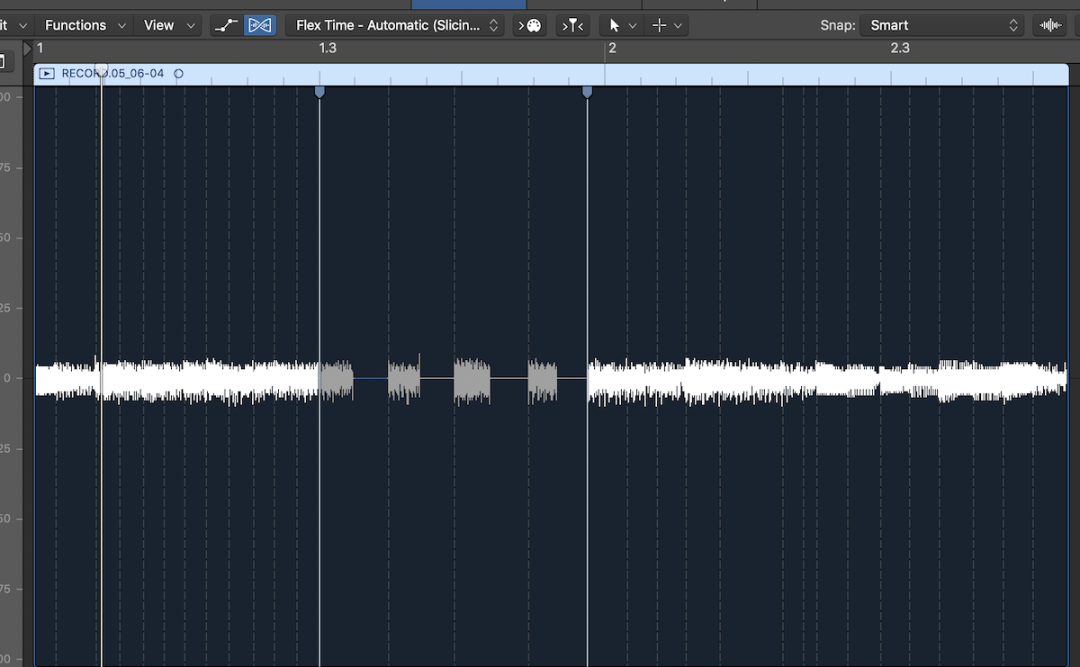Being able to time stretch digital audio, independent of pitch, is handy in all sorts of ways. Let’s have a look!
What Is Time Stretch?
Time stretching enables us to shorten or lengthen audio without changing its pitch. Stretching techniques have been around since the tape days, but you couldn’t separate stretching from shifting. If you slowed the tape down you’d lower the pitch, and if you sped it up, you’d increase the pitch.
Nowadays, software algorithms have gotten so good that we can time stretch the day away without affecting pitch.
Time Stretching vs. Pitch Shifting
Pitch shifting, also called pitch scaling, lets us raise or lower the pitch of a file without changing the speed. This is a commonly used creative effect, and there are a number of plugins out there that shift pitch.
There’s also something called pitch control, or “varispeed,” which we previously defined above. Varispeed on tape machines is what let you change both the time and pitch by a certain amount. This is also frequently used as a creative effect, oftentimes to signal a build-up or breakdown.
Pro Tools’s AudioSuite plugin, Vari-Fi, is a great example of a varispeed tool.
How Does Stretching Work?
Stretching uses complex algorithms to manipulate audio. To speed something up, or make it shorter, the software has to cut chunks of audio out and then sew it all back up. Then to stretch something out, or make it longer, it actually has to pull previously non-existent audio from somewhere, and again sew it all back together.
As long as the stretching isn’t drastic, you can keep your audio sounding natural and artifact-free.
Real-Time vs. Offline Stretching
Real-time stretching is when you change your session tempo and the files follow along. For instance, if your session is all MIDI, you may have recorded/programmed at 120 BPM but it feels a little slow—when you bump your session tempo up to 125, the files follow.
Certain audio file formats are real-time stretchable, too. Apple Loops, Acidized WAVs, and REX files will follow tempo information. More easily, certain DAWs give you the option to have any audio file stretch to fit the session tempo.
Offline stretching is when you use your DAW’s dedicated time stretching tool and drag clips to the desired length. You might also have a dedicated stretching plugin. Compared to real-time, you’ll generally get the best result from offline stretching.
When to Use Time Stretching
There are lots of situations when you’d want to use time stretching.
- You started recording at 130 BPM and halfway through decided it’d be better at 128 BPM. The easiest solution is to finish recording at the current tempo, mix the song, and stretch the master so you’re only hitting one file.
- Commercials use time stretching all the time to fit within the time allotment.
- You’re working with loops/samples at a different tempo from the session tempo.
- You need to fine tune ADR timing so that it matches the video.
- You want to create a cool effect using time stretch and pitch shift to dramatically alter a sound.
Tips to Keep in Mind When Using Time Stretch
- Speeding audio up, not slowing it down, retains better fidelity.
- Offline stretching generally works and sounds better than real-time stretching.
- Stretching is best applied modestly. Extreme stretches don’t sound right.
- Time stretching itself is normally used as a utility. Varispeed-style stretching/shifting is an effect.
And there we have it! A simple explanation and breakdown of one of digital audio’s “magic” abilities: changing the duration of a file without altering its pitch in the process.
Want to learn more about creative and corrective time/pitch correction? Check out The Ultimate Guide to Melodyne 5 with Carlo Libertini!
